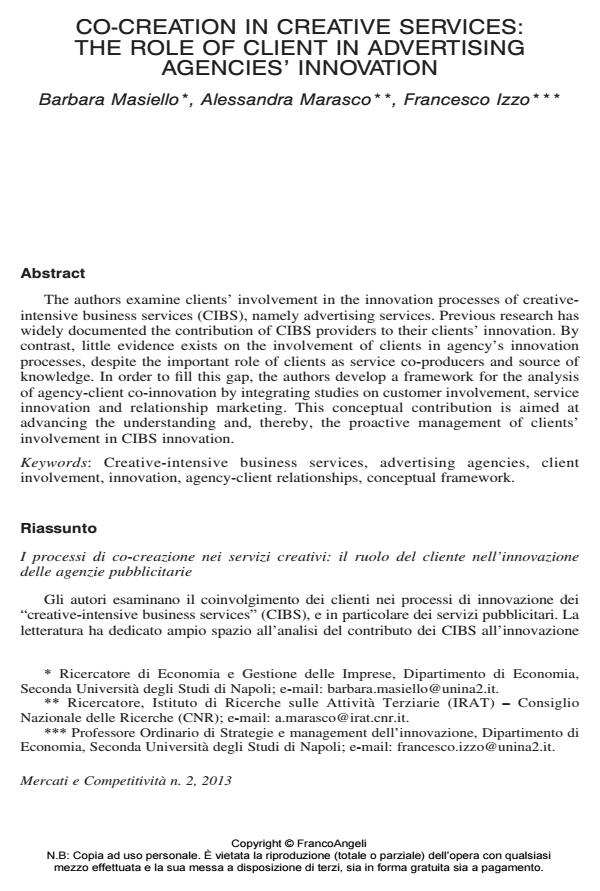CO-creation in creative services: the role of client in advertising agencies’ innovation
Titolo Rivista MERCATI & COMPETITIVITÀ
Autori/Curatori Barbara Masiello, Alessandra Marasco, Francesco Izzo
Anno di pubblicazione 2013 Fascicolo 2013/2
Lingua Italiano Numero pagine 25 P. 131-155 Dimensione file 754 KB
DOI 10.3280/MC2013-002007
Il DOI è il codice a barre della proprietà intellettuale: per saperne di più
clicca qui
Qui sotto puoi vedere in anteprima la prima pagina di questo articolo.
Se questo articolo ti interessa, lo puoi acquistare (e scaricare in formato pdf) seguendo le facili indicazioni per acquistare il download credit. Acquista Download Credits per scaricare questo Articolo in formato PDF

FrancoAngeli è membro della Publishers International Linking Association, Inc (PILA)associazione indipendente e non profit per facilitare (attraverso i servizi tecnologici implementati da CrossRef.org) l’accesso degli studiosi ai contenuti digitali nelle pubblicazioni professionali e scientifiche
The authors examine clients’ involvement in the innovation processes of creativeintensive business services (CIBS), namely advertising services. Previous research has widely documented the contribution of CIBS providers to their clients’ innovation. By contrast, little evidence exists on the involvement of clients in agency’s innovation processes, despite the important role of clients as service co-producers and source of knowledge. In order to fill this gap, the authors develop a framework for the analysis of agency-client co-innovation by integrating studies on customer involvement, service innovation and relationship marketing. This conceptual contribution is aimed at advancing the understanding and, thereby, the proactive management of clients’ involvement in CIBS innovation.
Parole chiave:"Creative-intensive business services", agenzie pubblicitarie, coinvolgimento del cliente, innovazione, relazioni agenzia-cliente, modello concettuale.
- Strategie di innovazione nelle imprese creative di servizi Francesco Izzo, Barbara Masiello, in ECONOMIA E DIRITTO DEL TERZIARIO 1/2015 pp.63
DOI: 10.3280/ED2015-001004
Barbara Masiello, Alessandra Marasco, Francesco Izzo, CO-creation in creative services: the role of client in advertising agencies’ innovation in "MERCATI & COMPETITIVITÀ" 2/2013, pp 131-155, DOI: 10.3280/MC2013-002007